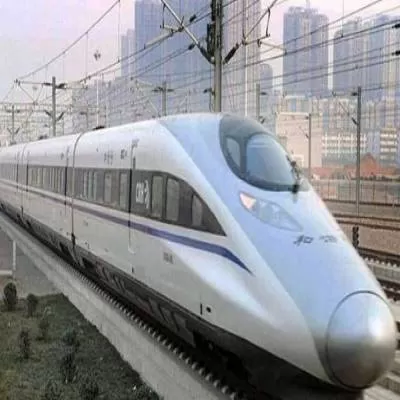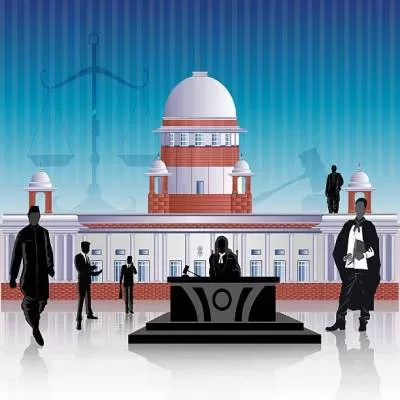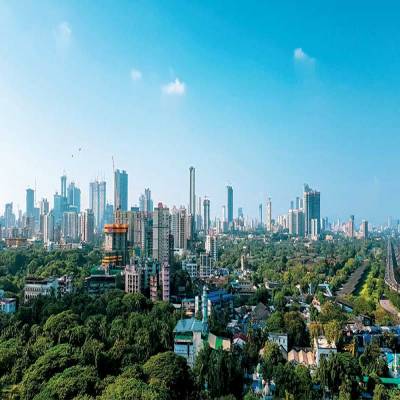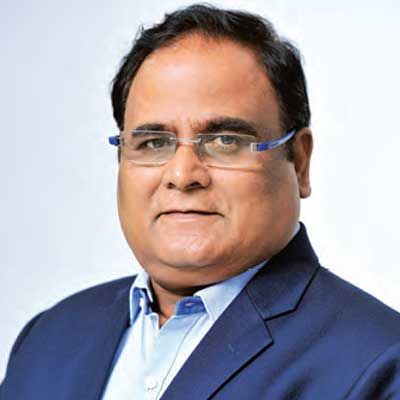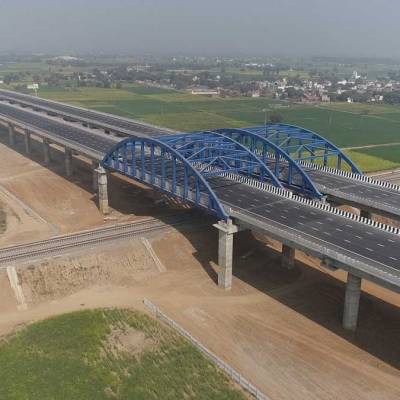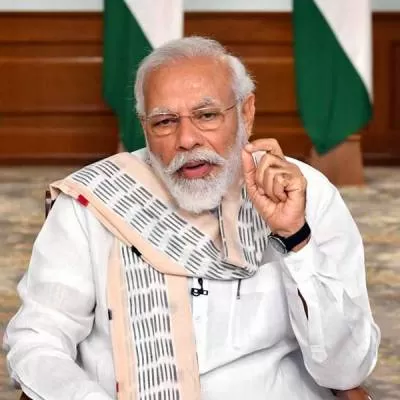- Home
- Infrastructure Urban
- ECONOMY & POLICY
- MMR´s Mega Plan
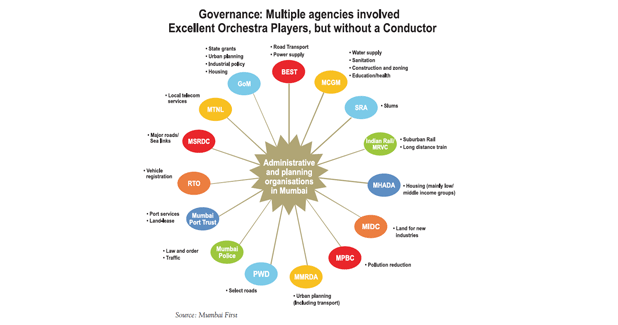
MMR´s Mega Plan
Maharashtra Chief Minister Devendra Fadnavis on Mumbai Next - MMR Transformation ´The Mumbai Metropolitan Region (MMR) will see an investment of over Rs 1 lakh crore. We have already started investing aggressively in creating infrastructure. Investments will be witnessed in mega projects including the Metro, Coastal Road, Mumbai Trans-Harbour Link, Airport, and more. As part of the plan, we are also creating a new city, NAINA, to be developed in the Navi Mumbai Airport Influence Notified Area, which will be bigger than Mumbai and can host 30 smart cities. So, in days to come, there will be many infrastructure initiatives in MMR.´
Welcome to Mumbai - India´s maximum city with a global status. The world´s fifth largest metropolitan region that generates 6.16 per cent of the national GDP and India´s economic powerhouse, Mumbai is home to India´s key financial regulators. It is a hub of business, industry and services, and home to 47 consulates - the most after New York anywhere in the world. What´s more, the Bombay Stock Exchange is the second oldest stock and 12th largest in the world. This is truly a city that never sleeps...the city of dreams.
Nevertheless, behind the gloss, there´s plenty of grime. As much as the city has evolved over the past 150 years, a reality check reveals the following facts: Only 105 lpcd water is supplied against the requirement of 140-150 lpcd. Only 30 per cent of sewage is treated. Fifty-three per cent of Mumbai´s population and 45 per cent of the population of the Mumbai Metropolitan Region (MMR) live in slums. The share of public transport has declined from 86 per cent to 76 per cent. There is only 20 per cent storm-water drain coverage. Peak morning travel time is one-and-a-half to two hours. Only 70 per cent of solid waste is collected. And there is only 2.7-sq-m open space per capita compared to 14 sq m in Beijing.It´s clearly time for a transformation. This begs the question: What´s next for Mumbai?
Creating a blueprint
When Maharashtra Chief Minister Devendra Fadnavis was asked about his plan for the city, his response was practical: With so many plans having being made for Mumbai over the years, it would be more prudent to implement these than create a new one. For his part, Fadnavis has sanctioned over 25 development plans in two months´ time. This includes a logistics hub city planned in Bhiwandi and an entirely new city in Kalyan, each to be developed as a smart city. He has also been instrumental in bringing down the permission regime from 70 to 20-30 permissions. Pro-development institution Mumbai First is a key catalyst in this transformation process. Shishir Joshi, CEO, Mumbai First, says, ´From ideating to identifying key projects, playing the role of a think tank and bringing stakeholders on the same table for a healthy discussion leading to tangible solutions that focus on the larger good, Mumbai First is a constant.´ Currently, the firm is actively working with the government´s team to put together the ´war roo,supported by McKinsey & Company. This initiative aims to identify and fast-track key projects that affect the MMR. ´This setup will physically operate from Mantralaya and report to the chief minister,´ adds Joshi.
The war room
The war room is said to be the biggest game changer in this initiative. ´We have over 26 agencies in MMR and close to 17 in Mumbai alone,´ points out Joshi. ´There is duplication of work and decision-making, which delays action. There is no single authority that prevails.´ The war room will act as a single body to examine all projects in one room, to evaluate which agency is following up what, and where the delays are taking place. Necessary intervention will be taken and the matter at hand would be brought to the chief minister to ensure bottlenecks are cleared.
Endorsing the move, Krishna Murthy, Senior Manager, Global Aviation, Louis Berger, says, ´There needs to be one coordinating body across various agencies and entities for effective and streamlined delivery of projects. The war room looks like a smart step in this direction. It can coordinate across various departments and ministries not only in the state but at the Central level too. Hopefully, this will be an effective tool to eliminate the majority of roadblocks for growth.´
One hopes the impact will be felt on some much-vaunted mega projects that are set to take off. These include the Coastal Road, Mumbai Trans-Harbour Link (MTHL), NAINA city and Metro Line 3, among many others. After a thorough check with MMRDA, CIDCO and the Municipal Corporation of Greater Mumbai (MCGM), CW has collated a list of about 35 projects (including MCGM´s road master plan) that will transform the MMR, with an updated status (see 35 projects in ´The Plan´ listed in this story).
Recorded reactions
Whether it is developers, contractors, consultants or financiers, all stakeholders in the industry are gung-ho about the opportunities. ´Real estate and infrastructure will definitely be at the core of the success of this plan,´ says Ramesh Nair, COO-Business & International Director, JLL India. Confirming that JLL can add significant value in this regard, he adds, ´We are already engaging with the government and industry bodies at multiple levels to contribute to this transformation.´´The chief minister´s assurance of a speedy approval process for key infrastructure projects such as MTHL and new metro lines is an excellent step and should make project funding relatively easier,´ says Rupen Patel, Managing Director, Patel Engineering Ltd. Patel Engineering has been active in MMRDA and has successfully handed over the Santacruz-Chembur Link Road (SCLR) bridge, Chand Bibi Housing Project and the Mithi River Project, among other. ´We look forward to projects that require special skills,´ he adds. ´As contractor,we await an opportunity with Metro Line 3; subsequently, Line 4 to 8 of Phase-II covering almost 100 km of Mass Rapid Transit System (MRTS) will provide an immense boost to infrastructure projects in and around Mumbai.´ At present, the company is executing works on BMC´s two new water tunnels: Verawali to Powai and Powai to Ghatkopar.
Also welcoming the chief minister´s initiative is Rajesh Prajapati, Managing Director, Prajapati Constructions Ltd. ´The Mumbai Next plan will definitely boost the real-estate sector in the city,´ he says. ´Upcoming infra projects that will have a large impact on the sector include Mumbai Metro Phase-III, MTHL, Navi Mumbai International Airport, JNPT SEZ, Seawood-Uran Commuter Rail Link, Navi Mumbai Metro Rail, Water Transport and the Coastal Road project.´
While Prajapati agrees that NAINA holds great promise for future, he adds, ´There is a lot of ground to travel before real development can take place in NAINA areas. The delay notwithstanding, we will work in these areas in future.´ To this, Nair adds, ´NAINA will act as a catalyst for the overall development of Navi Mumbai, Panvel and other catchment areas. Considering the current price levels in Mumbai, the demand will gradually get channelled to the affordable housing segment in those areas.´ Indeed, it will be interesting to see the new Housing Policy expected in May this year, especially when affordable housing has been on the priority list of the state government.
Further, the government has held up the Bandra-Kurla Complex (BKC) as a positive example to learn from. ´BKC has been successful in establishing itself as a preferred option as a commercial location over South Mumbai,´ affirms Siddharth Bhatia, Marketing Head, The Wadhwa Group. ´This decision could be based on factors like better proximity, easy connectivity to the Central, Western and Harbour lines, and larger space rather than space-crunched offices. BKC is one of the core target areas for The Wadhwa Group and any initiative taken by the government for the betterment of this area will enhance our contribution to the location.´ Meanwhile, Jagdishkumar M Gupta, Chairman & Managing Director, J Kumar Infraprojects Ltd, has already started building his project bank. ´At present, there are tenders for work worth Rs 32,000 crore in the pipeline, and we are in the process of bidding for the same,´ he says with confidence. ´For CIDCO, we have done the Metro rail and work on the Metro depot is in full swing. We have also been executing bridges, including the Kalwa-Turbhe bridge and the recently inaugurated Mahape bridge. Kapurbawadi is ready for opening, and the Kherwadi bridge in Bandra will open in April, two months ahead of schedule. We have also bagged a new contract for a bridge crossing BKC and the Mithi River, further connecting to Bhakti Park. Work has already started.´ The underground Metro from Colaba to Seepz is a project the company is eyeing, shares Gupta, adding, ´Our company is capable of doing all types of work like elevated Metro, underground metro, flyover, rail-over-bridge and river bridge. We also construct tunnels, canals, dams and runways.´
Tackling the challenges
While players gear up, the biggest challenges MMR faces relate to governance and decision-making. ´Multiple agencies slow decision-making,´ rues Joshi. The malaise of the current system is well-known - lengthy and numerous processes for approval involving multiple departments, ministries and officials. The chief minister has certainly tackled this problem head on with his announcement that he will lower the number of permissions required to start a business from 76 to 25. ´If this directive is implemented in good faith, it will certainly go a long way in improving the execution of the MMR plan,´ believes Nair. Other challenges include project design, scarcity of land and land acquisition problems, financial assistance for large projects, and environment and other clearances.
CW serves up some industry solutions:
- Gupta: The Land Acquisition Act can simplify infrastructure development.
- Patel: Appointment of an experienced consultant and competent executing agencies are key to project success. Preparation of thorough DPR, extensive pre-investigation and implementation of a fair contract will minimize disputes and enable project delivery on time and within budget.
- Prajapati: The government should bring in industry-friendly policies to help in growth of the real-estate industry. For instance, land should be given at subsidized rates to developers to create affordable housing stock. Reduced lending rates by banks can help meet the government´s development plan.
The bigger act
Undoubtedly, when the world looks at business growth in India, they will invariably look at how Mumbai performs. By delivering on the promises made, the state government will successfully boost the image of the state. Nair adds, ´With Gujarat, Madhya Pradesh and Uttar Pradesh aggressively trying to attract investments, Maharashtra should not hold back on any efforts.´ Also, the Maharashtra State Budget has already sent out positive waves with its focus on boosting infrastructure, especially rural roads.
Going forward, then, how will Mumbai Next contribute to the larger plan of Make in Maharashtra? Subhash Desai, Minister of Industries, Government of Maharashtra, answers, ´Make in Maharashtra speaks of manufacturing activities. Manufacturing and trading are commercial activities; they go hand in hand and cannot survive independently. Mumbai is India´s commercial capital and many global companies have their offices here. When they promote commercial activities, it automatically reflects in the development of manufacturing. Considering that Mumbai is creating an atmosphere for commercial growth, this will be a win-win situation.´ (Read full interview on page 60.) That said, initiatives like Mumbai Next will help boost the sentiment of future investors in the state, and country.
Make it happen
Currently, infrastructure projects are conceptualized the day their need is realized. But by the time they are finally executed, Mumbai has already progressed way ahead, and the infrastructure lags behind again. The Navi Mumbai International Airport is an example. The alternate airport is needed today, but we may get it only after another four to five years. ´Like the stage for a performing artist, a canvas for a painter, Mumbai is the platform where professionals like me can showcase their talent,´ avers Nair. It´s time to let such professionals flourish by planning early, planning ahead and planning decisively. With an ambitious vision in place and multiple projects on fast-track mode, it´s time to make Mumbai happen.
But, is Mumbai ready?
Sitaram Kunte, Municipal Commissioner, Municipal Corporation of Greater Mumbai ´The cognisance of components related to Mumbai has been already taken in Draft Development Plan 2034.´
Sanjay Bhatia, Vice Chairman & Managing Director, CIDCO
´Mumbai is absolutely ready, as long as environment clearances come quickly.´
Shishir Joshi CEO, Mumbai First
´We cannot achieve solutions overnight. Now, decision-making is slowly emerging.´
SM Ramchandani, Joint Managing Director, Maharashtra State Road Development Corporation (MSRDC)
´Once the infrastructure committee is in place and projects are cleared, we get closer to achieving the plan.´
Arundhati Bhattacharya, Chairman, State Bank of India
´Plans will take time to fructify; we need to ensure timelines are met for every stage of the project.´
Krishna Murthy, Senior Manager, Global Aviation, Louis Berger
´The plan is realistic if the right policies and incentives are in place.´
Jagdishkumar M Gupta,
Chairman & Managing Director, J Kumar Infraprojects Ltd
´We are close to achieving the Mumbai transformation; works should start by year-end.´
Rupen Patel, Managing Director, Patel Engineering Ltd
´Transformation is taking place gradually, but it needs to keep pace with the rising demands of the citizens of MMR.´
Rajesh Prajapati, Managing Director, Prajapati Constructions Ltd
´If the government keeps working with the same aggression and zeal, we should see the MMR transformation within 10 years.´
Ramesh Nair, COO-Business & International Director, JLL India
´Mumbai needs better planning. Else, by the time we realise and execute projects, the city progresses way ahead and infrastructure lags behind.´
Subhash Desai, Minister of Industries, Government of Maharashtra
´In the next five years, there will be great transformation in infrastructure development in Mumbai.´
´Viable projects with all sanctions in place will be considered.´
Arundhati Bhattacharya, Chairman, State Bank of India, shares her perspective on the city´s mega plan.
- Mumbai Next: It is a practical and desired initiative. However, execution will remain the key. Various agencies such as Maharashtra Housing & Area Development Authority (MHADA), CIDCO, MCGM and MMRDA will have to ensure that their plans complement each other. The beginning is expected to be made by addressing the problems that loom large currently, such as traffic flow.
- Large infra projects: The North-South Mumbai transport linkage through Metro, provision of feeder bus services in the suburbs, better East-West connectivity and other sub-urban projects were proposed in the concept paper. Efforts, it appears, are being made in right earnest. The environmental issues and financial linkages have to be settled. With the intent of the government to invite investments of the size envisioned, I hope processes will be put in place sooner than later.
- Maintaining timelines: The matter, as can be seen, is receiving the government´s unwavering attention. However, these plans will take time to fructify. We need to ensure that timelines are met for every stage of the project.
- SBI´s sector pick: Activities relating to construction, infrastructure and creation of warehousing or godowns appear to be looking up. Viable projects with all sanctions in place will be considered.
Quick Bytes
Focus: Implementing existing and planned projects than creating new ones.
Challenges: Land acquisition, funding, environment clearance.
War Room: Single body to examine projects.
Much-vaunted mega projects: Mumbai Trans-Harbour Link, NAINA City, Coastal Road, Metro Line 3, BKC smart plan.
Navi Mumbai International Airport - Site Orientation and Connectivity Work has started on the long-pending and largest greenfield Navi Mumbai International Airport in India costing Rs 14,573 crore and catering to 60 million passengers per annum. Total airport area is 2,268 hectare (core airport area: 1,160 hectare; allied activities area: 1,108 hectare). With the majority of clearances for the project in place, RFQ for the PPP project has been invited. After prolonged negotiations with project-affected people, a settlement for acquiring 656 hectare through consent agreements has been reached; following this, the process of land acquisition has begun. The way forward for the project is as follows:
By 2052 THE LARGEST METROPOLIS IN THE WORLD
GDP: $1 trillion (35th largest among countries)
Population: 44 million (Largest metro globally)
Urban area: 1,750 sq km
Work force: 23 million
Housing demand: 14.8 million
Commercial space demand: 100 million sq m
Smart commercial hubs
The BKC smart city is still in the planning stage. ´It will take one month for the plan to finalise, after which the DPR will be prepared and tenders floated,´ says Dilip Kawathkar, Dy Metropolitan Commissioner, MMRDA. ´We expect work to start with the next three to four months.´ To this, Ramesh Nair, COO-Business & International Director, JLL India, adds, ´The initiatives under the smart BKC are to have WiFi, smart street lighting, smart parking, video analytics-based CCTV and smartphone application for the public. This will benefit approximately 6 lakh people who work in BKC. This pilot project, if successful, will be implemented in other areas like the business district being planned in Wadala.´ He adds that about 8-10 ´economically master-planned´ integrated spaces in and around the MMR are being planned along similar lines as BKC.
In fact, the plan is ready for one such business hub in Kalyan, which reportedly includes a well-developed transport system, smart city facilities including WiFi networks, CCTV cameras, smart parking system and solar lighting applications; and necessary infrastructure for housing to attract investors. Plans are being laid to take over around 1,000 hectare to make the growth centre in Kalyan economically viable. MMRDA will also develop similar growth centres at Vasai-Virar, Bhiwandi, Panvel and Alibaug-Pen alongside the proposed Virar-Alibaug Multimodal Corridor (VAMC).
| MILESTONES | ESTIMATED TIMELINE |
| Completion of bidding process (RFQ and RFP) |
May 2015 |
| Selection of concessionaire | July 2015 |
| Commencement of work | October 2015 |
| Commencement of Phase-I airport operations |
2019 |
- Maharashtra
- Devendra Fadnavis
- Building
- Infrastructure
- MMR
- NAINA
- Shishir Joshi
- Krishna Murthy
- MTHL
- MMRDA
- CIDCO
- MCGM
- JLL India
- Ramesh Nair
- Transformation
- Rupen Patel
- Patel Engineering Ltd
- SCLR
- Chand Bibi Housing Project
- MRTS
- Rajesh Prajapati
- JNPT SEZ
- Coastal Road project
- Bandra-Kurla Complex
- Wadhwa Group
- Jagdishkumar M Gupta
- J Kumar Infraprojects Ltd
- Subhash Desai
- Sitaram Kunte
- Sanjay Bhatia
- SM Ramchandani
- Arundhati Bhattacharya
- Krishna Murthy
- MHADA
- Ramesh Nair
- Dilip Kawathkar
- VAMC
With Maharashtra Chief Minister Devendra Fadnavis announcing his ambitious plans to transform Mumbai, CW highlights over 35 ongoing and upcoming project opportunities in the city for the building and infrastructure stakeholders. Maharashtra Chief Minister Devendra Fadnavis on Mumbai Next - MMR Transformation ´The Mumbai Metropolitan Region (MMR) will see an investment of over Rs 1 lakh crore. We have already started investing aggressively in creating infrastructure. Investments will be witnessed in mega projects including the Metro, Coastal Road, Mumbai Trans-Harbour Link, Airport, and more. As part of the plan, we are also creating a new city, NAINA, to be developed in the Navi Mumbai Airport Influence Notified Area, which will be bigger than Mumbai and can host 30 smart cities. So, in days to come, there will be many infrastructure initiatives in MMR.´ Welcome to Mumbai - India´s maximum city with a global status. The world´s fifth largest metropolitan region that generates 6.16 per cent of the national GDP and India´s economic powerhouse, Mumbai is home to India´s key financial regulators. It is a hub of business, industry and services, and home to 47 consulates - the most after New York anywhere in the world. What´s more, the Bombay Stock Exchange is the second oldest stock and 12th largest in the world. This is truly a city that never sleeps...the city of dreams. Nevertheless, behind the gloss, there´s plenty of grime. As much as the city has evolved over the past 150 years, a reality check reveals the following facts: Only 105 lpcd water is supplied against the requirement of 140-150 lpcd. Only 30 per cent of sewage is treated. Fifty-three per cent of Mumbai´s population and 45 per cent of the population of the Mumbai Metropolitan Region (MMR) live in slums. The share of public transport has declined from 86 per cent to 76 per cent. There is only 20 per cent storm-water drain coverage. Peak morning travel time is one-and-a-half to two hours. Only 70 per cent of solid waste is collected. And there is only 2.7-sq-m open space per capita compared to 14 sq m in Beijing.It´s clearly time for a transformation. This begs the question: What´s next for Mumbai? Creating a blueprint When Maharashtra Chief Minister Devendra Fadnavis was asked about his plan for the city, his response was practical: With so many plans having being made for Mumbai over the years, it would be more prudent to implement these than create a new one. For his part, Fadnavis has sanctioned over 25 development plans in two months´ time. This includes a logistics hub city planned in Bhiwandi and an entirely new city in Kalyan, each to be developed as a smart city. He has also been instrumental in bringing down the permission regime from 70 to 20-30 permissions. Pro-development institution Mumbai First is a key catalyst in this transformation process. Shishir Joshi, CEO, Mumbai First, says, ´From ideating to identifying key projects, playing the role of a think tank and bringing stakeholders on the same table for a healthy discussion leading to tangible solutions that focus on the larger good, Mumbai First is a constant.´ Currently, the firm is actively working with the government´s team to put together the ´war roo,supported by McKinsey & Company. This initiative aims to identify and fast-track key projects that affect the MMR. ´This setup will physically operate from Mantralaya and report to the chief minister,´ adds Joshi. The war room The war room is said to be the biggest game changer in this initiative. ´We have over 26 agencies in MMR and close to 17 in Mumbai alone,´ points out Joshi. ´There is duplication of work and decision-making, which delays action. There is no single authority that prevails.´ The war room will act as a single body to examine all projects in one room, to evaluate which agency is following up what, and where the delays are taking place. Necessary intervention will be taken and the matter at hand would be brought to the chief minister to ensure bottlenecks are cleared. Endorsing the move, Krishna Murthy, Senior Manager, Global Aviation, Louis Berger, says, ´There needs to be one coordinating body across various agencies and entities for effective and streamlined delivery of projects. The war room looks like a smart step in this direction. It can coordinate across various departments and ministries not only in the state but at the Central level too. Hopefully, this will be an effective tool to eliminate the majority of roadblocks for growth.´ One hopes the impact will be felt on some much-vaunted mega projects that are set to take off. These include the Coastal Road, Mumbai Trans-Harbour Link (MTHL), NAINA city and Metro Line 3, among many others. After a thorough check with MMRDA, CIDCO and the Municipal Corporation of Greater Mumbai (MCGM), CW has collated a list of about 35 projects (including MCGM´s road master plan) that will transform the MMR, with an updated status (see 35 projects in ´The Plan´ listed in this story). Recorded reactions Whether it is developers, contractors, consultants or financiers, all stakeholders in the industry are gung-ho about the opportunities. ´Real estate and infrastructure will definitely be at the core of the success of this plan,´ says Ramesh Nair, COO-Business & International Director, JLL India. Confirming that JLL can add significant value in this regard, he adds, ´We are already engaging with the government and industry bodies at multiple levels to contribute to this transformation.´´The chief minister´s assurance of a speedy approval process for key infrastructure projects such as MTHL and new metro lines is an excellent step and should make project funding relatively easier,´ says Rupen Patel, Managing Director, Patel Engineering Ltd. Patel Engineering has been active in MMRDA and has successfully handed over the Santacruz-Chembur Link Road (SCLR) bridge, Chand Bibi Housing Project and the Mithi River Project, among other. ´We look forward to projects that require special skills,´ he adds. ´As contractor,we await an opportunity with Metro Line 3; subsequently, Line 4 to 8 of Phase-II covering almost 100 km of Mass Rapid Transit System (MRTS) will provide an immense boost to infrastructure projects in and around Mumbai.´ At present, the company is executing works on BMC´s two new water tunnels: Verawali to Powai and Powai to Ghatkopar. Also welcoming the chief minister´s initiative is Rajesh Prajapati, Managing Director, Prajapati Constructions Ltd. ´The Mumbai Next plan will definitely boost the real-estate sector in the city,´ he says. ´Upcoming infra projects that will have a large impact on the sector include Mumbai Metro Phase-III, MTHL, Navi Mumbai International Airport, JNPT SEZ, Seawood-Uran Commuter Rail Link, Navi Mumbai Metro Rail, Water Transport and the Coastal Road project.´ While Prajapati agrees that NAINA holds great promise for future, he adds, ´There is a lot of ground to travel before real development can take place in NAINA areas. The delay notwithstanding, we will work in these areas in future.´ To this, Nair adds, ´NAINA will act as a catalyst for the overall development of Navi Mumbai, Panvel and other catchment areas. Considering the current price levels in Mumbai, the demand will gradually get channelled to the affordable housing segment in those areas.´ Indeed, it will be interesting to see the new Housing Policy expected in May this year, especially when affordable housing has been on the priority list of the state government. Further, the government has held up the Bandra-Kurla Complex (BKC) as a positive example to learn from. ´BKC has been successful in establishing itself as a preferred option as a commercial location over South Mumbai,´ affirms Siddharth Bhatia, Marketing Head, The Wadhwa Group. ´This decision could be based on factors like better proximity, easy connectivity to the Central, Western and Harbour lines, and larger space rather than space-crunched offices. BKC is one of the core target areas for The Wadhwa Group and any initiative taken by the government for the betterment of this area will enhance our contribution to the location.´ Meanwhile, Jagdishkumar M Gupta, Chairman & Managing Director, J Kumar Infraprojects Ltd, has already started building his project bank. ´At present, there are tenders for work worth Rs 32,000 crore in the pipeline, and we are in the process of bidding for the same,´ he says with confidence. ´For CIDCO, we have done the Metro rail and work on the Metro depot is in full swing. We have also been executing bridges, including the Kalwa-Turbhe bridge and the recently inaugurated Mahape bridge. Kapurbawadi is ready for opening, and the Kherwadi bridge in Bandra will open in April, two months ahead of schedule. We have also bagged a new contract for a bridge crossing BKC and the Mithi River, further connecting to Bhakti Park. Work has already started.´ The underground Metro from Colaba to Seepz is a project the company is eyeing, shares Gupta, adding, ´Our company is capable of doing all types of work like elevated Metro, underground metro, flyover, rail-over-bridge and river bridge. We also construct tunnels, canals, dams and runways.´ Tackling the challenges While players gear up, the biggest challenges MMR faces relate to governance and decision-making. ´Multiple agencies slow decision-making,´ rues Joshi. The malaise of the current system is well-known - lengthy and numerous processes for approval involving multiple departments, ministries and officials. The chief minister has certainly tackled this problem head on with his announcement that he will lower the number of permissions required to start a business from 76 to 25. ´If this directive is implemented in good faith, it will certainly go a long way in improving the execution of the MMR plan,´ believes Nair. Other challenges include project design, scarcity of land and land acquisition problems, financial assistance for large projects, and environment and other clearances. CW serves up some industry solutions: Gupta: The Land Acquisition Act can simplify infrastructure development. Patel: Appointment of an experienced consultant and competent executing agencies are key to project success. Preparation of thorough DPR, extensive pre-investigation and implementation of a fair contract will minimize disputes and enable project delivery on time and within budget. Prajapati: The government should bring in industry-friendly policies to help in growth of the real-estate industry. For instance, land should be given at subsidized rates to developers to create affordable housing stock. Reduced lending rates by banks can help meet the government´s development plan. The bigger act Undoubtedly, when the world looks at business growth in India, they will invariably look at how Mumbai performs. By delivering on the promises made, the state government will successfully boost the image of the state. Nair adds, ´With Gujarat, Madhya Pradesh and Uttar Pradesh aggressively trying to attract investments, Maharashtra should not hold back on any efforts.´ Also, the Maharashtra State Budget has already sent out positive waves with its focus on boosting infrastructure, especially rural roads. Going forward, then, how will Mumbai Next contribute to the larger plan of Make in Maharashtra? Subhash Desai, Minister of Industries, Government of Maharashtra, answers, ´Make in Maharashtra speaks of manufacturing activities. Manufacturing and trading are commercial activities; they go hand in hand and cannot survive independently. Mumbai is India´s commercial capital and many global companies have their offices here. When they promote commercial activities, it automatically reflects in the development of manufacturing. Considering that Mumbai is creating an atmosphere for commercial growth, this will be a win-win situation.´ (Read full interview on page 60.) That said, initiatives like Mumbai Next will help boost the sentiment of future investors in the state, and country. Make it happen Currently, infrastructure projects are conceptualized the day their need is realized. But by the time they are finally executed, Mumbai has already progressed way ahead, and the infrastructure lags behind again. The Navi Mumbai International Airport is an example. The alternate airport is needed today, but we may get it only after another four to five years. ´Like the stage for a performing artist, a canvas for a painter, Mumbai is the platform where professionals like me can showcase their talent,´ avers Nair. It´s time to let such professionals flourish by planning early, planning ahead and planning decisively. With an ambitious vision in place and multiple projects on fast-track mode, it´s time to make Mumbai happen. But, is Mumbai ready? Sitaram Kunte, Municipal Commissioner, Municipal Corporation of Greater Mumbai ´The cognisance of components related to Mumbai has been already taken in Draft Development Plan 2034.´ Sanjay Bhatia, Vice Chairman & Managing Director, CIDCO ´Mumbai is absolutely ready, as long as environment clearances come quickly.´ Shishir Joshi CEO, Mumbai First ´We cannot achieve solutions overnight. Now, decision-making is slowly emerging.´ SM Ramchandani, Joint Managing Director, Maharashtra State Road Development Corporation (MSRDC) ´Once the infrastructure committee is in place and projects are cleared, we get closer to achieving the plan.´ Arundhati Bhattacharya, Chairman, State Bank of India ´Plans will take time to fructify; we need to ensure timelines are met for every stage of the project.´ Krishna Murthy, Senior Manager, Global Aviation, Louis Berger ´The plan is realistic if the right policies and incentives are in place.´ Jagdishkumar M Gupta, Chairman & Managing Director, J Kumar Infraprojects Ltd ´We are close to achieving the Mumbai transformation; works should start by year-end.´ Rupen Patel, Managing Director, Patel Engineering Ltd ´Transformation is taking place gradually, but it needs to keep pace with the rising demands of the citizens of MMR.´ Rajesh Prajapati, Managing Director, Prajapati Constructions Ltd ´If the government keeps working with the same aggression and zeal, we should see the MMR transformation within 10 years.´ Ramesh Nair, COO-Business & International Director, JLL India ´Mumbai needs better planning. Else, by the time we realise and execute projects, the city progresses way ahead and infrastructure lags behind.´ Subhash Desai, Minister of Industries, Government of Maharashtra ´In the next five years, there will be great transformation in infrastructure development in Mumbai.´ ´Viable projects with all sanctions in place will be considered.´ Arundhati Bhattacharya, Chairman, State Bank of India, shares her perspective on the city´s mega plan. Mumbai Next: It is a practical and desired initiative. However, execution will remain the key. Various agencies such as Maharashtra Housing & Area Development Authority (MHADA), CIDCO, MCGM and MMRDA will have to ensure that their plans complement each other. The beginning is expected to be made by addressing the problems that loom large currently, such as traffic flow. Large infra projects: The North-South Mumbai transport linkage through Metro, provision of feeder bus services in the suburbs, better East-West connectivity and other sub-urban projects were proposed in the concept paper. Efforts, it appears, are being made in right earnest. The environmental issues and financial linkages have to be settled. With the intent of the government to invite investments of the size envisioned, I hope processes will be put in place sooner than later. Maintaining timelines: The matter, as can be seen, is receiving the government´s unwavering attention. However, these plans will take time to fructify. We need to ensure that timelines are met for every stage of the project. SBI´s sector pick: Activities relating to construction, infrastructure and creation of warehousing or godowns appear to be looking up. Viable projects with all sanctions in place will be considered. Quick Bytes Focus: Implementing existing and planned projects than creating new ones. Challenges: Land acquisition, funding, environment clearance. War Room: Single body to examine projects. Much-vaunted mega projects: Mumbai Trans-Harbour Link, NAINA City, Coastal Road, Metro Line 3, BKC smart plan. Navi Mumbai International Airport - Site Orientation and Connectivity Work has started on the long-pending and largest greenfield Navi Mumbai International Airport in India costing Rs 14,573 crore and catering to 60 million passengers per annum. Total airport area is 2,268 hectare (core airport area: 1,160 hectare; allied activities area: 1,108 hectare). With the majority of clearances for the project in place, RFQ for the PPP project has been invited. After prolonged negotiations with project-affected people, a settlement for acquiring 656 hectare through consent agreements has been reached; following this, the process of land acquisition has begun. The way forward for the project is as follows: By 2052 THE LARGEST METROPOLIS IN THE WORLD GDP: $1 trillion (35th largest among countries) Population: 44 million (Largest metro globally) Urban area: 1,750 sq km Work force: 23 million Housing demand: 14.8 million Commercial space demand: 100 million sq m Smart commercial hubs The BKC smart city is still in the planning stage. ´It will take one month for the plan to finalise, after which the DPR will be prepared and tenders floated,´ says Dilip Kawathkar, Dy Metropolitan Commissioner, MMRDA. ´We expect work to start with the next three to four months.´ To this, Ramesh Nair, COO-Business & International Director, JLL India, adds, ´The initiatives under the smart BKC are to have WiFi, smart street lighting, smart parking, video analytics-based CCTV and smartphone application for the public. This will benefit approximately 6 lakh people who work in BKC. This pilot project, if successful, will be implemented in other areas like the business district being planned in Wadala.´ He adds that about 8-10 ´economically master-planned´ integrated spaces in and around the MMR are being planned along similar lines as BKC. In fact, the plan is ready for one such business hub in Kalyan, which reportedly includes a well-developed transport system, smart city facilities including WiFi networks, CCTV cameras, smart parking system and solar lighting applications; and necessary infrastructure for housing to attract investors. Plans are being laid to take over around 1,000 hectare to make the growth centre in Kalyan economically viable. MMRDA will also develop similar growth centres at Vasai-Virar, Bhiwandi, Panvel and Alibaug-Pen alongside the proposed Virar-Alibaug Multimodal Corridor (VAMC). MILESTONES ESTIMATED TIMELINE Completion of bidding process (RFQ and RFP) May 2015 Selection of concessionaire July 2015 Commencement of work October 2015 Commencement of Phase-I airport operations 2019



